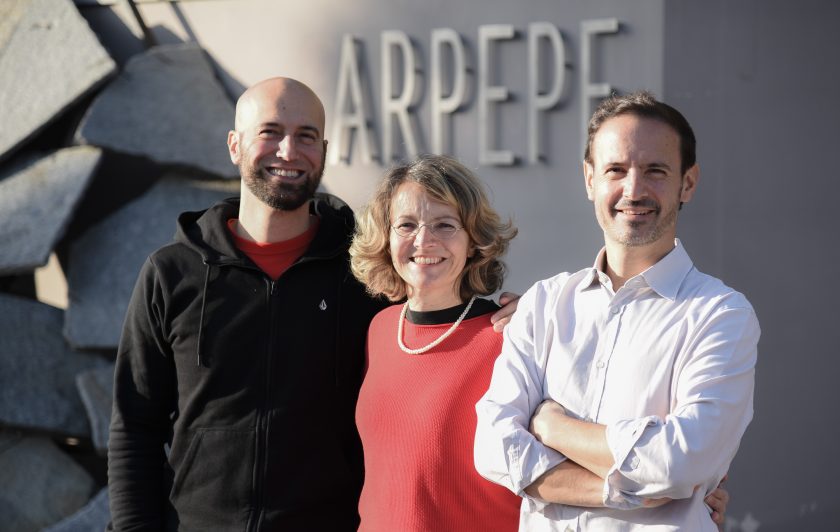2016 ARPEPE Rosso di Valtellina MAGNUM
This is alpine Nebbiolo like you’ve never had before — finessed, smooth, the more delicate side of the grape made famous for its power in Barolo. This bottling is from the 5th generation Ar.Pe.Pe estate in northern Italy’s Valtellina, Lombardy (on the border with Switzerland).
Sustainable farming practices and 4,000 cases produced annually.
- Tasting Notes strawberry, red cherry, hibiscus tea, white pepper, peppermint, leather
- Variety 100% Chiavennasca (Nebbiolo)
- Region Italy, Lombardy
- Volume 1.5L
- Alcohol Volume 12.5%
- Table Talk The terraced vineyards of ARPEPE are tucked in between the Orobic and Retic Alps just south of the Italian-Swiss border.

“These wines from ARPEPE (an abbreviation of founder Arturo Pelizzatti Perego’s initials) are among the most impressive I tasted… From top to bottom, the wines are deserving of serious attention. The super-traditional style will leave lovers of translucent Nebbiolo weak at the knees… Perhaps most importantly, ARPEPE shows just how pedigreed the wines of Valtellina can be.” — Antonio Galloni, Vinous
Tucked in between the Orobic and Retic Alps just south of the Italian-Swiss border, you’ll find the terraced vineyards of ARPEPE. At the helm of this storied estate, located in the Grumello subzone of Valtellina in Lombardy, is the fifth generation of the Pelizzatti Perego family. The roots of this blue-chip estate go back to the 1860s, when the current generation’s great-great-grandfather Giovanni founded a successful winery in the area, then known only as “Pelizzatti.” Over 150 years of history have passed since then, including the dark days of the 1970s during which the current generation’s grandfather fell ill, and the family was forced to sell the Pelizzatti brand along with some of their vineyards. The more recent history of the estate is an almost deus-ex-machina turn of events: the family re-founded their company under the ARPEPE label in 1984, got back many of their proprietary vineyards from renters, and were able to reclaim their cellar in Grumello. Today, ARPEPE is widely recognized as the single best producer in the appellation (as well as a benchmark producer of Nebbiolo in general) and we couldn’t be more thrilled to bring them to our customers.
Related Items
-
Liquore delle Sirene Aperitivo Americano Rosso
$40.00This aperitivo is made from organically-farmed Trebbiano di Soave and Garganega grapes, as well as local herbs from Lake Garda, Italy. No chemicals or artificial coloring are used.
This is an aperitivo (think Aperol) but unlike Aperol, is not an industrial, mass produced product.
HOW TO DRINK IT
Enjoy on the rocks, in a Spritz, negroni, or in a paloma with your favorite tequila or mezcal. -
2021 Clos La Coutale Cahors Malbec (half-bottle)
$17.00Cahors is the sneakily sophisticated but humbler country cousin of Bordeaux. It’s the ancestral home of Malbec and it captures everything that makes this estate beloved by sommeliers, importers, and everyday drinkers alike: depth without heaviness, structure without austerity, and earthy charm wrapped in juicy fruit. This is one of our favorite party picks.
Organic farming practices and aged for a year in French oak barrels.
-
2019 Domaine Alain Burguet Gevrey-Chambertin ‘Lavaux Saint Jacques’ Premier Cru
$225.00This rustic Pinot Noir hails from a premier cru climat just west of Gevrey-Chambertin. The palate is medium-bodied with rich and concentrated flavors, nice acidity, and integrated tannins. Aged for 19 months in barrel (50% new oak).
Like all of Burguet’s wines, this bottle is produced from organic (converting to biodynamic) fruit, native yeasts, and is bottled unfined / unfiltered. Only 50 cases produced.
-
2023 Domaine Marc Portaz Vin de Savoie ‘Apremont’ Tête de Cuvée
$22.00This crisp white from the French Alps is a true Apres Ski! France’s most mountainous region, the vines are 30 to 50-years-old and grown on the site of an ancient avalanche. It has similar fruit aromas to Sancerre and flavors as complex and mineral-driven as Chablis.
Sustainable farming practices, hand-harvested and native yeast fermentation.






